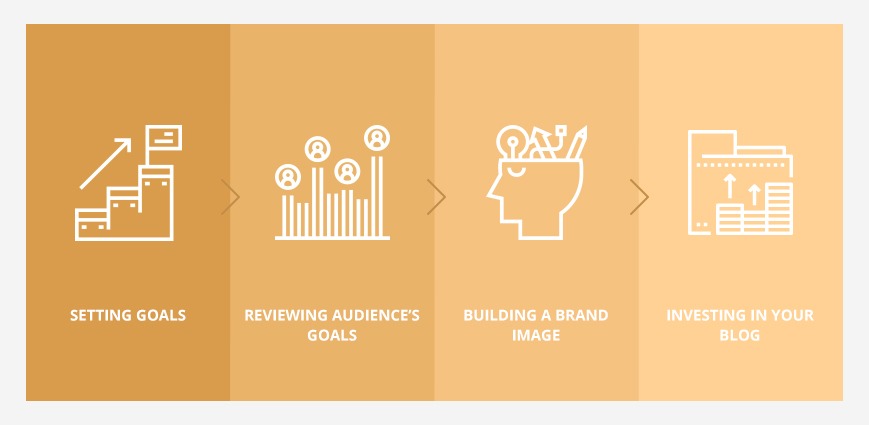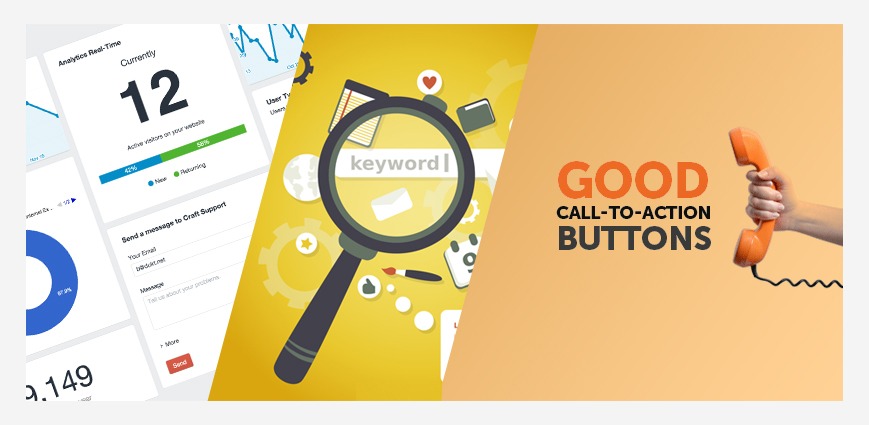The essentials of your e-commerce blogging strategy
The idea that blogging is not for e-commerce is just wrong. Content can definitely strengthen your online business, as long as you have a strategy in place and you stick to it. Sure, that’s where most business owners fail – they either don’t have a strategy at all or they are too eager to see results, so they stop too soon.
In an article anticipating content marketing trends for 2017, the guys from the Content Marketing Institute pointed out how top performers:
- Are realistic that long results will always take time
- Deliver consistently
- Focus on measuring their results
Are you ready to seriously commit to your strategy?
Here are the 4 pillars of any successful e-commerce blogging strategy:
- Setting goals – don’t waste time and write with a purpose. Every post should be a step towards that purpose. Wanna hit 5.000 email subscribers or score $10.000 in monthly sales? Break your main goal into smaller chunks – daily or weekly, monthly or yearly goals.
- Reviewing audience’s goals – if your only focus is your goal, you might forget offering value to your readers, which can actually kill your business. When you plan your content, make sure it both benefits your audience and fits your blogging strategy.
- Building a brand image – this should help you stand out and make people trust you. There are tons of brands on the market, in every niche, but only those that are perceived as “trustworthy” will stand the test of time and constantly increase their base of followers.
- Investing in your blog – using paid advertising with your content efforts should result into more tangible results, encouraging you to keep moving forward. Just remember, while paid advertising gives exposure, it’s the valuable content that makes people keep coming back.

The 4 pillars of any successful e-commerce blogging strategy
How should your content look?
99% of people will never make a purchase from a first visit to your website. Give them something that will make them come back and the more they return, the higher the chances to buy. Your content should be:

The essential elements on how should your content look
- Evergreen – content that is timeless and relevant, aka evergreen, will give you better search rankings, more website traffic, and enhanced lead generation.
- Long-form – statistics show that most of the top 10 positions in Google searches have content of at least 2000 words; for starters, you can focus on creating posts of at least 1000 words.
- With links – adding internal links can skyrocket your website traffic within a matter of weeks; this is one of those on-page SEO optimization techniques that still works like charm.
- With answers – regular users don’t just use keywords when making their searches; they rather type in questions and the better you insert those questions into your posts, with their answers, the more buzz your business will generate.
What topics should you approach?

Specific suggestions on which topics you should approach
Many won’t write consistently because they don’t know what to write. And for e-commerce websites that promote so many products, from where on earth do you start? Here are some specific suggestions:
- Teach them how to use a particular product/products;
- Show them how to solve a problem using one of your products;
- Describe specific features that not everybody is well aware of;
- Share news within the industry, such as new product releases, even though they are not currently available in your store;
- Introduce giveaways, promotions, selloffs and any other discounts you are offering;
- Create gift giving guides on special occasions, grouping and presenting your products by categories;
- Write individual product reviews, comparative reviews or Top X best products in Y category posts;
- Compile interesting facts about particular products, such as – how it’s made / how was this invented?
- Create individual FAQs for specific products and answer as many questions as you can;
- Write about questions that your target customers usually discuss on forums;
- Compile useful resources for some of their needs, by making them informational recommendations – top 10 articles on X topic that you should read.
How do you fill the dots?
We agreed you need to set goals and align them with your readers’ goals. We discussed the topics you can write about, but how do you actually achieve your goals through content?
Want to grow blog subscribers and reach? Insert CTAs to encourage readers subscribe or share your posts.
Want to generate same-day or immediate sales? Sale more aggressively in SOME of your posts linking directly to product pages.
Want to get more inbound links? Create extremely valuable content – people will want to share because it’s great and it will make them look great by sharing such information.
Want to improve your rankings on long-tail keywords? Focus your posts on the questions people type in Google and optimize the texts accordingly.
Needless to say, you will have to constantly measure metrics:
- RSS and email subscribers with posts that generate them
- blog-to-transaction visits in Analytics
- new links from new domains and referral traffic over time
- page ranks and keywords they rank for etc.

Still feeling overwhelmed? Design19 can help you set things straight. Whether you need an audit of your current website, blog, and posting strategies, or actual help with putting together an SEO optimized content strategy, give us a sign.
We’re here to help you!